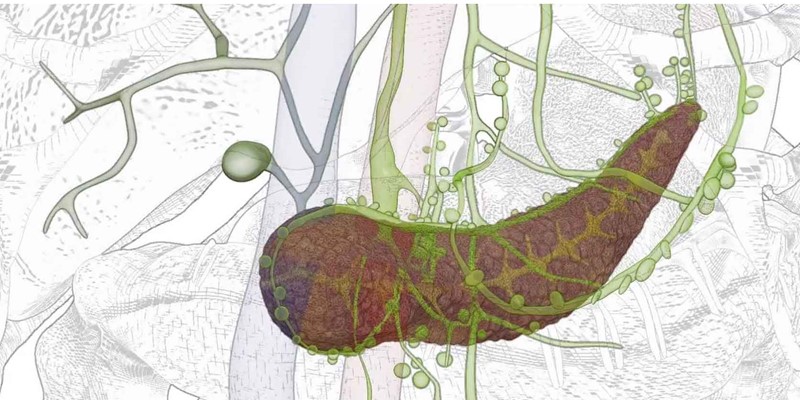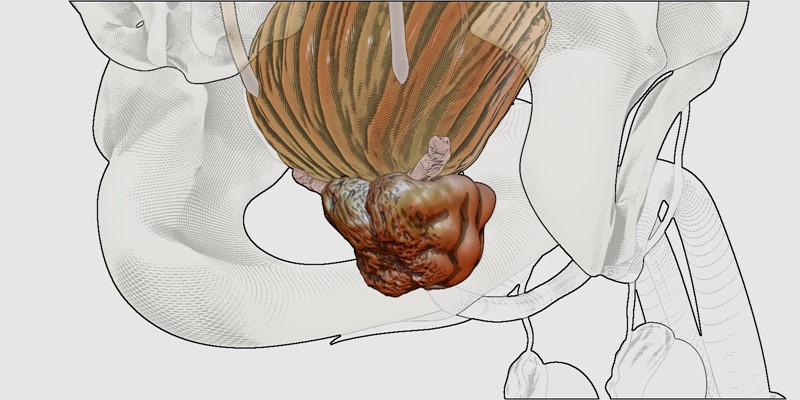Exciting new diagnostic and therapeutic approaches in prostate cancer with PSMA
New diagnostic and therapeutic approaches in PSMA
11 March 2019
As Prof. Dr. James Nagarajah, assistant professor Nuclear Medicine at Radboud University in Nijmegen addressed during his talk PSMA Guided Theranostics in Prostate Cancer at NRG at February 1, 2019, the future of prostate cancer (PCa) may be rather exciting. Prostate-specific membrane antigen (PSMA) is a key protein which can be used for diagnostic as well as therapeutic modalities, opening new and promising perspectives for both physicians and patients.
PCa has a high social and economic influence on society as well as impacting the lives of many men worldwide. Approximately one in every seven men is diagnosed with the disease during his lifetime. PCa is not only a leading cause of death in men – 1 in every 38 men will eventually succumb to the disease –, but 30-40% of those that have been initially cured will experience a recurrence of the disease sooner or later. Patients often live many years after diagnosis and PCa survival depends on many aspects such as mutations, severity, staging of the tumor etc. An important distinction in this respect is non-metastatic (localized) disease versus metastatic disease as there are more treatment options available for the first stage of PCa.
Subscribe to our newsletter!
Contact NRG

Karlijn van der Schilden
R&D Manager Medical Isotopes
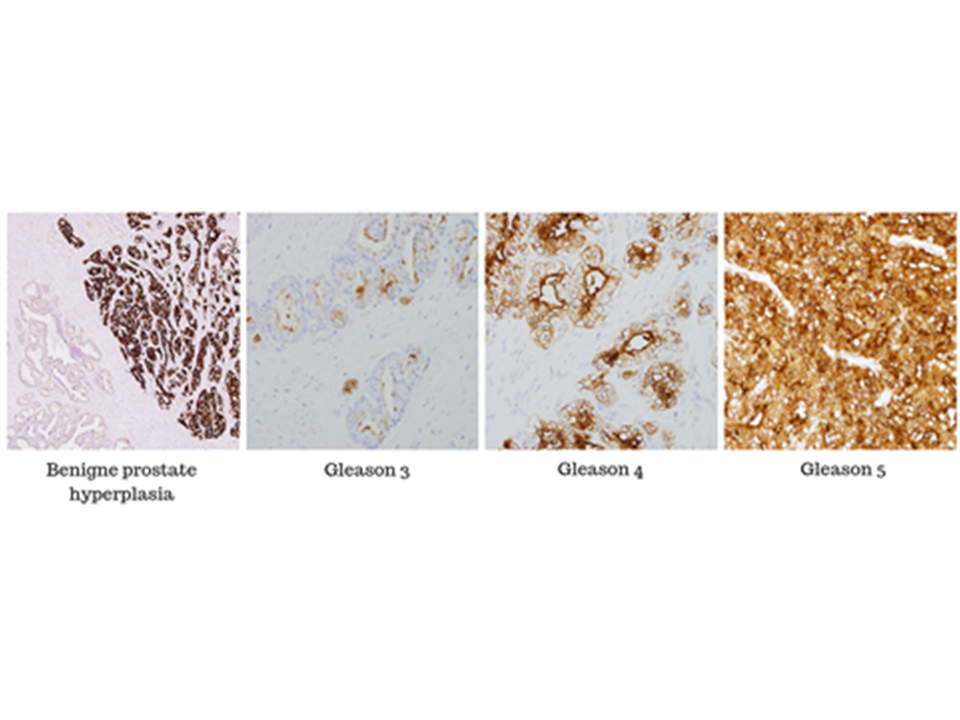
The role of PSMA
PSMA is a membrane protein, which has a key role in PCa. The expression of PSMA is PCa specific and increases with tumor grade; when increased, it means higher grade tumors, metastatic disease and hormone-refractory PCa (Figure 1). (Ref. 1,2)
PSMA is a known target for scintigraphy and there are different PSMA ligands: Ga-68 PSMA-11 and F-68 PSMA-1007 among many others; each ligand shows differences in terms of affinity to the target and biodistribution.1,
Figure 1: PSMA expression in different gradations: (Ref. 2)
PSMA in diagnostics
The PSMA ligand can be labeled for diagnostic or therapeutic purposes (Table 1). (Ref. 1,2)
PSMA guided diagnostics are very sensitive and therefore can be used to detect even very small lymph node metastases. (Ref. 3) The importance of the use of appropriate diagnostics is further illustrated by a meta-analysis by Han et al. which involved fifteen studies. It found that there was a substantial change of management of patients (in 54% of pooled proportion of patients) after PSMA PET/CT. Thus, the decision of referring physicians or multidisciplinary oncology committees was altered in approximately half of the patients which has a high impact on both patient and physician. (Ref. 4)
Other currently investigated diagnostic modalities with PSMA include fusion biopsy of the prostrate by a research group in Munich, aimed at achieving better information (combining the advantageous features of MRI and PET). (Ref. 5) PSMA PET/CT based radiation planning seems to be a promising tool as well. It uses information based on PET in which an active part of the tumor is identified and radiation can be planned accordingly (not just the pelvic region) which enables a higher dose and less adverse events (AEs). (Ref.6) There is also an ongoing study with Tc-99m-PSMA-guided lymph node resection in which PSA is labelled to identify one or more very active lymph node(s). The advantage of this approach is that suspicious lymph nodes can be removed selectively. Moreover, PSA can be labelled by adding fluorescence to PSMA, then use a probe and see which lymph node(s) light(s) up. This means more precise surgery and there are currently clinical studies to study this combination. (Ref. 7,8)
Table 1: The use of PSMA guided diagnostics and therapy (Ref. 1,2)
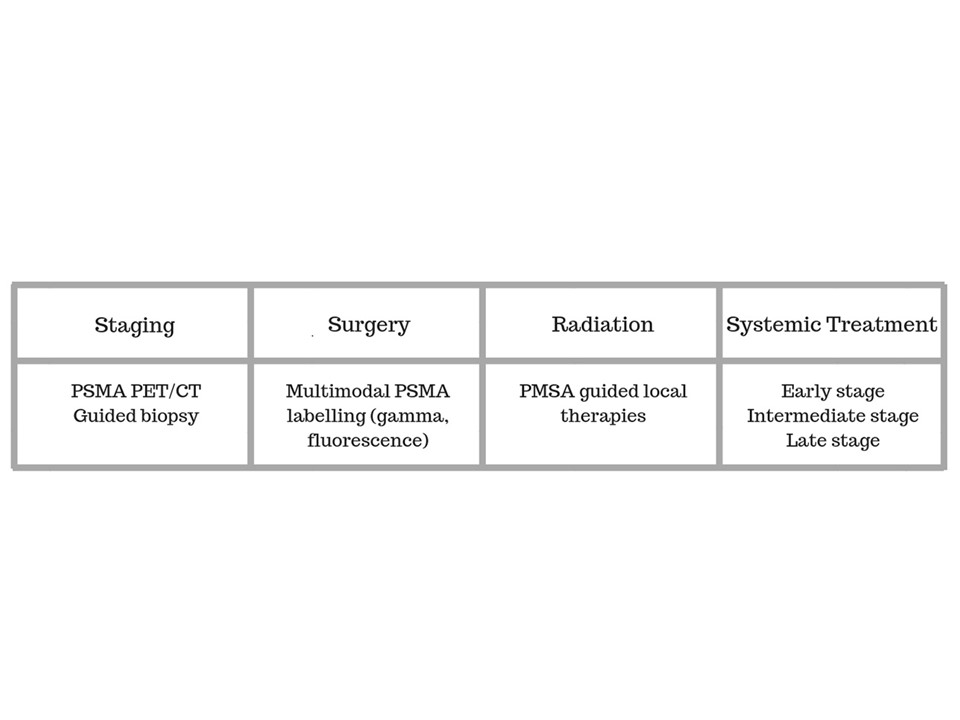
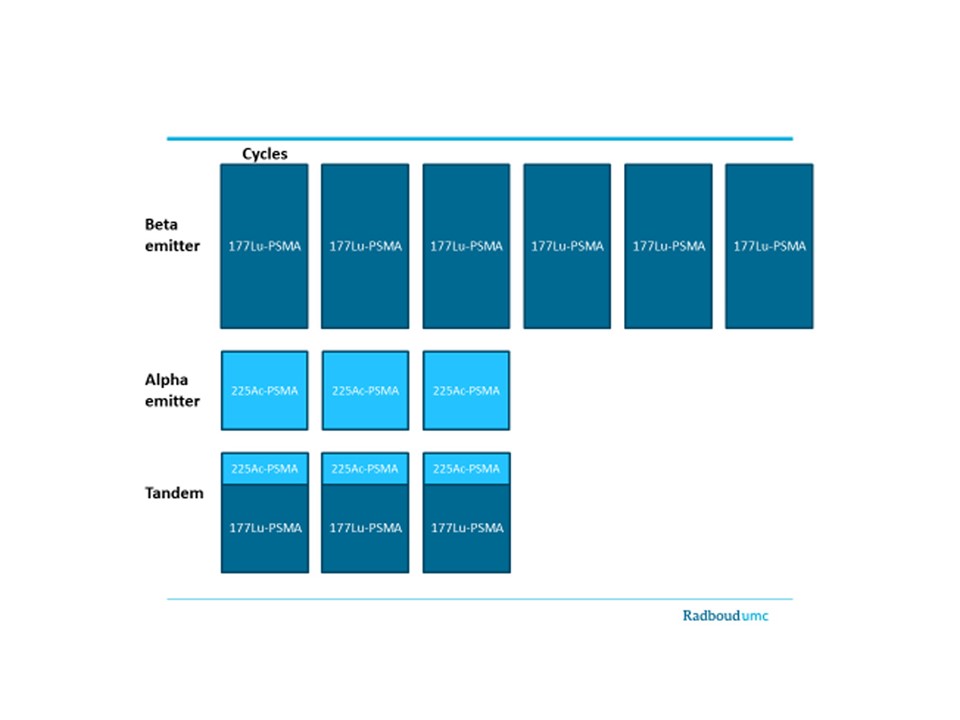
PSMA in therapeutics
Castration resistant (CR)PCa can be treated with various first lines treatment combinations such as androgen deprivation therapy (ADT) and docetaxel. These have been assessed in studies such as CHAARTED, STAMPEDE and TROPIC. Third and fourth line treatment of PCa is Lu-177 PSMA; results from studies show very promising results as these patients are end stage, have had many therapies (and their AEs) including chemotherapy. (Ref. 9) The international, prospective, open-label, multi-center, randomized Phase 3 VISION trial is currently evaluating Lu-177 PSMA in the treatment of patients with progressive PSMA-positive metastatic CRPCa. A recently published prospective study confirmed the results of multiple retrospective studies. The currently available data shows that typically, 4 cycles are needed (frequency 2 months) and the number of lesions decreased, correlating with prostate specific antigen (PSA) levels. A total of 52% of patients had stable disease (SD) according to the RECIST criteria, with a further 20% achieving a partial response (PR) and 28% experiencing progressive disease (PD). (Ref. 10-13) If the treatment works in end-stage patients, it can be hypothesised that it works in earlier stages of the PCa as well. Thus, Lu-177 is evaluated in a prospective pilot study in hormone sensitive PCa (ClinicalTrials.gov Identifier: NCT03828838). This study will include 10 patients, with 10 lesions, who are hormone sensitive and have a positive PSMA PET. The aim is to postpone hormone therapy which has many AEs, as well as trying to set a dose. PSMA therapy with alpha emitters has demonstrated to be an effective treatment, but comes with a high risk for xerostomia and increased toxicity (re-coil effect). (Ref. 14) Tandem treatment may be a feasible option in the near future in which alpha and beta emitters are combined (Figure 2). The advantages include a lower rate of toxicity, higher efficacy in comparison with Lu alone and lower costs. Some centers already use this type of treatment.
Figure 2: PSMA tandem treatment
The importance of dosimetry
Although imaging can provide physicians detailed and specific information on (progression of the) disease, one thing it does not tell us is dosimetry. Although there have been studies performed on dosimetry with Lu-177 PSMA, only one of these was prospective. In this study by Violet et al., which included 30 patients, dosimetry was performed after cycle 1 with patients receiving up to 4 cycles. It emerged that there was a significant correlation between ‘whole body’ tumor dose and PSA response: if patients receive a whole body tumor dose of mean about 15 Gy, they have a higher chance to have a 50% reduction in serum PSA at 12 weeks. (Ref. 15) These results clearly show that dosimetry is an important pillar in radioligand therapy (RLT) as it allows an individual treatment approach, which is a unique ‘selling’ point in cancer treatment. Assessment of tumor doses, dose-response relationships and doses to organs at risk need to be performed. Pre-treatment dosimetry for individual assessment is desirable as it predicts the dose and enables patient selection: which patient will respond, which will not? This approach prevents patients being treated unnecessarily with agents that are not effect but do have (serious) AEs.
Future directions Radboudumc
Regarding the use of PSMA in the diagnostic and therapeutic field, Radboudumc focuses on a number of topics to be addressed and developed.
• To improve diagnostics with F-18/Ga-68 PSMA PET/(n)MRI
• Individual pre-therapeutic dosimetry (Sc-44, Cu-64, Zr-89…) PSMA. Currently, treatment is done like chemotherapy treatment
• PSMA PET/MRI guided biopsies (local, metastases)
• PSMA PET/MRI guided radiation planning
• Dual labelled (SPECT and fluorescence) PSMA for precise surgery
• Local therapies (cryo, brachy etc.)
• PSMA labelled with alpha/beta emitter for therapy (tandem treatment). PSMA labelled with Lu-177 combined with Ac-225/Pb-212/Tb-161
More information?
Do you wish to learn more on lutetium-177 and how FIELD-LAB can help you? Get in touch with us!


